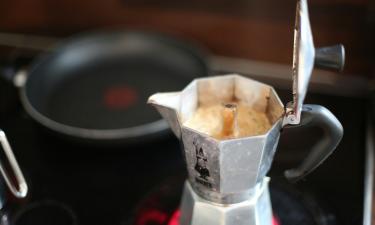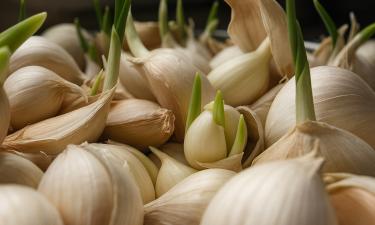Russian business-woman Yelena Baturina reveals new edges of Indian handcrafts to the world

A global humanitarian foundation BE OPEN, founded by the well-known Russian business-woman with a billiard-worth fortune Yelena Baturina, is now planning to conquer the Indian capital New Delhi. The previous notable projects implemented by the foundation in such centres of global design as Milan, London, Basel and Miami, have become extraordinary and significant events very highly evaluated by the leading designers, media and business representatives of Europe and the US.
Those events were held within a special program designed by the foundation and aimed at exploring the five human senses using the methodology of multisensory design.
The foundation's first Asian art-project "Made in ... India" has just been launched in India and is devoted to the exploration of traditional Indian handcrafts in terms of their potential for further transformation into new trends of global design industry.
This event is a pilot project and part of the "North/South-East/West" program which is currently implemented by the foundation - it explores the interconnection and mutual enrichment of different national cultures.
Why BE OPEN has chosen to land in Delhi, what the project is about and what purposes it follows - all that in the interview of the BE OPEN Founder Yelena Baturina to Pravda.Ru.
1) Be Open's theme for this year is North/South - East/West. What inspired you to come to India as part of this theme, and what is your vision for Made In... India?
There are many things said about the energy of India, its extraordinary living mythology, the presence of its past, its spirituality and simultaneously its contemporaneity. This is all true and makes it a remarkable place for us to launch our global investigation into bringing the past into the future. It's a place where one finds the contemporary and the historic living side by side. It is a delicate balance to maintain the two, but one that is worth achieving as they feed off each other so successfully.
From the time of the Mughals through the Rajput, to the present day, Indian craftsmen have been commissioned to carve and inlay marble, wood and stone, to weave in silk and to mold in clay. "Made in ... India's" exhibition will showcase furniture and tableware, textiles and jewels that reveal an imaginative reinterpretation of traditional craft skills by contemporary Indian designers.
As much as anything, this project is about instilling pride in indigenous skills. I think we're going to surprise the Indian market with what its own makers can produce and we want them to take these ideas forward and begin tapping into the future of design for themselves,
Our aim is to evolve craft for contemporary and future audiences, whilst giving a new value to the concept of 'Made in India'.
2) Made In... India has a special emphasis on handmade crafts. Why did you choose to do that?
Craft is the embryonic form of design; it is the way that people combine aesthetics and functionality. "Made in..." is a way to explore ways in which diverse cultures can meet and how to take traditional skills into the future, through innovation and technology. Our journey is enriched by the presence of a new generation of makers and designers, as well as students, academics and retail industry professionals who will help us gather impressions and solutions for the future.
We need to build on the past in order to create an appealing, convincing and sustainable future. The skills of handcrafting that underpin design need to be kept alive so that they can continue to inspire contemporary makers. There are a myriad of types of craft skills from all over India that will be featured in the BE OPEN exhibition.
Through discussions with the cultural government bodies here in India, we have found that there is a need to encourage craftspeople and artisans to continue working in sustainable ways, making craft regeneration and training a part of their business models. The only way to sustain national heritage and tradition is to keep refreshing and reinvigorating it, which is what we hope Made in ... will start to do in the various countries that it visits: India is just the starting point for a worldwide search for the handmade. We're going to look for and learn from differences in cultural practice and see how different communities are reinvigorating or using their indigenous skills to create the objects of the future. The idea is to bring work together from across the world to hopefully instigate new collaborations and innovative ways of working and being creative.
Indeed, we are seeing examples of new cross-genre projects in this exhibition. For example, artists Thukral & Tagra have created a terracotta iPod charging dock and speakers; Sahil & Sarthak have created a 4 feet long pooklam chandelier out of antique gold and enameling; Abraham & Thakore and Rahul Mishra have transposed their couture skills to creating highly detailed furniture pieces.
Thus we hope that our exhibition will draw attention to the future of design, craft and cross-cultural interaction, inspiring and generating exciting new ways of working.
3) What made you decide to partner with Sunil Sethi and Anupama Kundoo for this project?
We have made a number of strategic partnerships for this project, not just within India, but around the world, as is reflected in our highly diverse, international speaker panel, with expert contributors from Germany, France, Italy, UK, USA and of course, India who will share their experiences with us, discussing their particular visions for the future of crafts in a globalized world. They are key players in the field of contemporary design, whose names resonate internationally. Amongst them are Angelika Taschen, whose creative publishing industry is iconic and who has herself been involved in exploring Indian design and style for many years now; Raymond Simpson, who has over twenty years' experience in the ultimate luxury business, diamonds; and Armando Branchini, who represents the breadth of Italian Luxury Companies and Brands.
We are excited that anywhere we go, we are met with understanding and creative enthusiasm: all of the people involved in this project, whether speaking, curating, consulting or creating, are contributing immeasurably to BE OPEN's impact and presence around the world.
As for Sunil Sethi, he was a natural choice for us as he has been promoting Indian design abroad for over 10 years, raising the profile of local handicrafts. "Made in India" is a project that resonates strongly with his work. He has helped us identify the really key people working in design in India at the moment.
Anupama's mission to work with skilled groups of craftsmen has total synergy with our project as well. Her installation at the Venice Architecture Biennale 2012 brought her method to the attention of the world, gaining her much praise.
In summary, it's always fascinating to be part of the creative process in the creation of this project, when there has been an invigorating exchange of views, thoughts and ideas: it's the stimulus that keeps driving BE OPEN forward.
4) Samskara, the exhibition of Made In... India, will see everything from furniture and tableware to textiles and jewels on display. Is there a reason you didn't narrow it down to just one interpretation of design?
Our approach for this project has been empirical. The BE OPEN team comprises an international community of creative and business people and our research was appropriately wide-ranging. As a result of exploring various parts of the country and seeing a great diversity of its crafts, we developed a cross-cultural mosaic of findings.
We discovered such a rich variety of handicrafts being practiced in India today and, wanting to make the case for keeping the full gamut of skills alive, we decided to showcase a broad range of work.
We strongly believe that it is within design's power to practically improve on every element of our lives, so how can, or why should we, narrow the creative search of the designers involved? Each of the designers is unique in his own sense; each one has an acute feeling of their aesthetic heritage, and they all have shown a remarkable ability to transform the rich heritage of local handicrafts to a contemporary reality. What they are creating is not meant for museums; their works are not static exhibits; they are vigorous with life and reveal exciting, new ways of working. They fit perfectly into our everyday, modern lives and enhance our environment.
5) You've said that while a "design Utopia" is not possible, you hope that BE OPEN will enable the next generation to live in a beautiful, kind world. How has this journey been so far?
While any vision of utopia is practically unachievable, this does not mean that we shouldn't keep trying!
The instrument we have chosen is design in the broadest sense of the word, as an interdisciplinary realization of human genius and applied action. We believe that creativity should design the future.
For this reason, we are here to bring visionary people together, from all four corners of the world, getting them to connect, exchange ideas, explore together and stimulate each other's thinking. Young people need to get inspiration in order to develop their thinking and they need reassurance and support to continue to evolve their practice. We are offering that with mentoring, master classes and awards. We give a global platform to established practitioners so that they can share their knowledge and experience with the younger generation.
Seeing work submitted by students and emerging designers around the world who apply for our competitions has been inspiring and encouraging. There are so many wonderful minds working out there and we can not only give them the platform to show their work on a global scale, but we can bring key people together, connects ideas to implementation and ultimately bring new ideas into being. Underpinning all of BE OPEN's work is a conviction that creativity should not be consumed by the future; creativity should design the future! That's our vision of utopia - a place where young talent is nurtured and creative become the ruling class, business models can bear fruit and experiments can become realities.
Subscribe to Pravda.Ru Telegram channel, Facebook, RSS!





